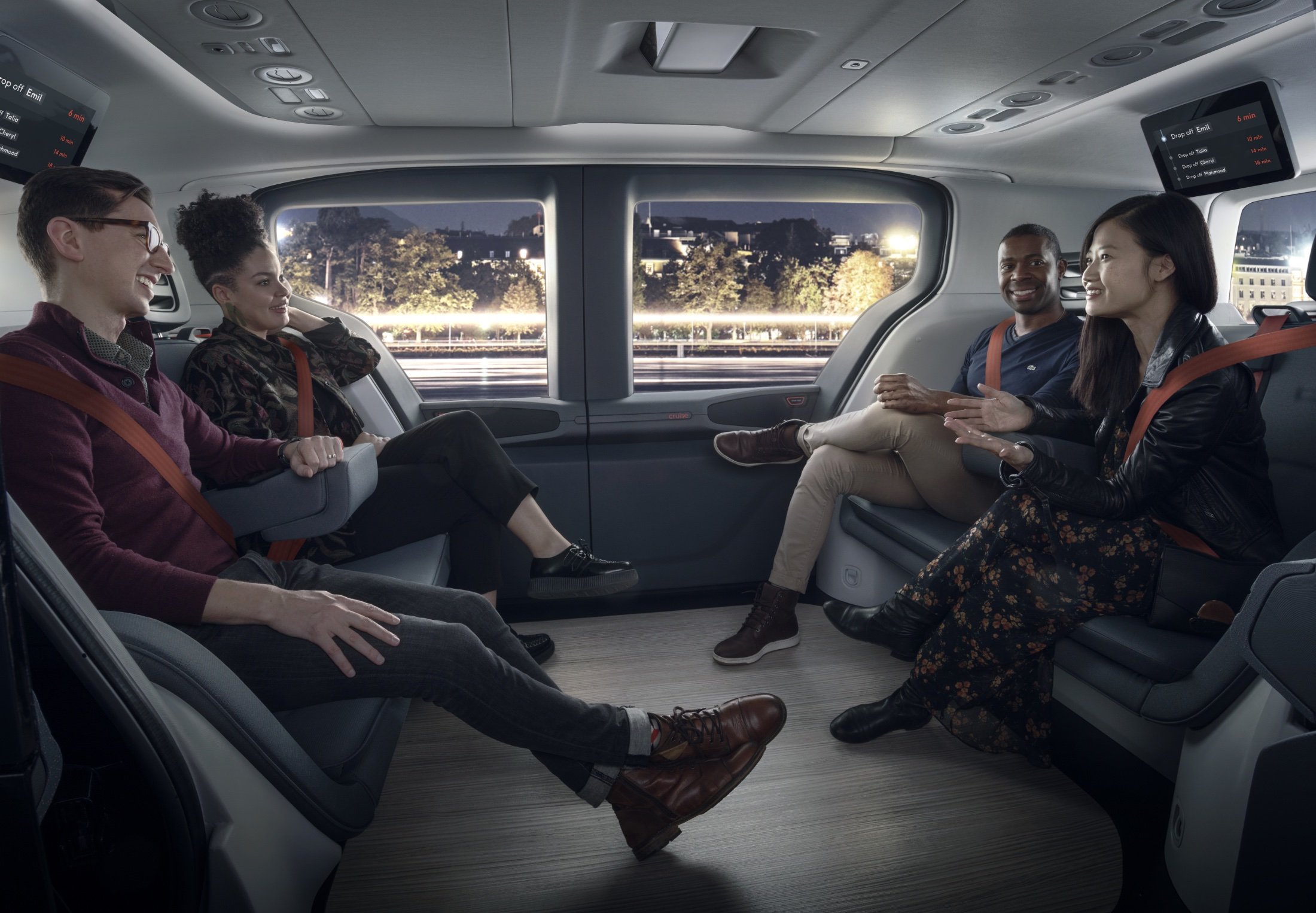
.pp-multiple-authors-boxes-wrapper {display:none;} img {width:100%;}
General Motors’ Factory Zero in Detroit and Hamtramck are on the cusp of mass-producing the Cruise Origin, a driverless vehicle designed to transport up to six passengers.
Cruise is GM’s self-driving subsidiary headquartered in San Francisco, which already operates in several cities across the US.
The Cruise Origin is devoid of manual steering controls or pedals and is designed to operate entirely through autonomous technology. However, that’s presented a significant hurdle which has delayed its production: obtaining approval from the National Highway Traffic Safety Administration (NHTSA) to secure an exemption from the existing federal safety standards, which were formulated with traditional vehicles in mind.
Recent statements from Kyle Vogt, the CEO of Cruise, suggest that this lengthy waiting game may soon reach its conclusion.
Speaking at the Goldman Sachs Communacopia and Technology Conference in San Francisco, Vogt hinted at an impending breakthrough: “We are — from what we’ve heard from NHTSA — just days away from the last regulatory approval, which would let us start production and almost immediately start putting these vehicles on the road.”
However, the NHTSA has not officially confirmed any timeline for its decision.
Cruise’s journey to this point has been marked by innovative disruption. They initially deployed modified self-driving Bolt vehicles in San Francisco in June 2022 for their robotaxi service, which recently gained permission to charge for rides.
The transition to the Cruise Origin hinges on addressing NHTSA’s inquiries regarding the operational safety of their existing self-driving vehicles, which have, on occasion, caused traffic disruptions and accidents.
Vogt passionately defended Cruise’s safety record, emphasising that they drive over one million miles each month and have earned over 100,000 five-star reviews. He acknowledged that being the largest fleet on the road meant they would encounter rare events first; leading to scrutiny and investigations by regulators.
As regulators receive and analyse the data, Vogt is confident they will gain more confidence in the technology. Driverless vehicles ultimately promise to make the roads safer by eliminating human error and collisions due to distractions, inebriation, or medical issues while at the wheel.
While Cruise’s project has faced numerous challenges, including reconfiguring the manufacturing process to accommodate vehicles without steering wheels, GM’s dedication to mass-producing autonomous vehicles could reshape the automotive landscape.
As the automotive industry stands on the precipice of a self-driving revolution, the imminent decision from the NHTSA could mark a historic moment in ushering in a new era of smart mobility.
(Image Credit: Cruise)
See also: Mozilla: Cars are ‘the worst product category’ for data collection


Want to learn about the IoT from industry leaders? Check out IoT Tech Expo taking place in Amsterdam, California, and London.
Explore other upcoming enterprise technology events and webinars powered by TechForge here.
.pp-multiple-authors-boxes-wrapper.box-post-id-24649.pp-multiple-authors-layout-boxed.multiple-authors-target-the-content.box-instance-id-1 .pp-author-boxes-avatar img { width: 80px !important; height: 80px !important; } .pp-multiple-authors-boxes-wrapper.box-post-id-24649.pp-multiple-authors-layout-boxed.multiple-authors-target-the-content.box-instance-id-1 .pp-author-boxes-avatar img { border-radius: 50% !important; } .pp-multiple-authors-boxes-wrapper.box-post-id-24649.pp-multiple-authors-layout-boxed.multiple-authors-target-the-content.box-instance-id-1 .pp-author-boxes-meta a { background-color: #655997 !important; } .pp-multiple-authors-boxes-wrapper.box-post-id-24649.pp-multiple-authors-layout-boxed.multiple-authors-target-the-content.box-instance-id-1 .pp-author-boxes-meta a { color: #ffffff !important; } .pp-multiple-authors-boxes-wrapper.box-post-id-24649.pp-multiple-authors-layout-boxed.multiple-authors-target-the-content.box-instance-id-1 .pp-author-boxes-meta a:hover { color: #ffffff !important; } .pp-multiple-authors-boxes-wrapper.box-post-id-24649.pp-multiple-authors-layout-boxed.multiple-authors-target-the-content.box-instance-id-1 .pp-author-boxes-recent-posts-title { border-bottom-style: dotted !important; } .pp-multiple-authors-boxes-wrapper.box-post-id-24649.pp-multiple-authors-layout-boxed.multiple-authors-target-the-content.box-instance-id-1 .pp-multiple-authors-boxes-li { border-style: solid !important; } .pp-multiple-authors-boxes-wrapper.box-post-id-24649.pp-multiple-authors-layout-boxed.multiple-authors-target-the-content.box-instance-id-1 .pp-multiple-authors-boxes-li { color: #3c434a !important; } .pp-multiple-authors-boxes-wrapper.box-post-id-24649.pp-multiple-authors-layout-boxed.multiple-authors-target-the-content.box-instance-id-1 .pp-multiple-authors-boxes-li { border-radius: px !important; }
- SEO Powered Content & PR Distribution. Get Amplified Today.
- PlatoData.Network Vertical Generative Ai. Empower Yourself. Access Here.
- PlatoAiStream. Web3 Intelligence. Knowledge Amplified. Access Here.
- PlatoESG. Automotive / EVs, Carbon, CleanTech, Energy, Environment, Solar, Waste Management. Access Here.
- PlatoHealth. Biotech and Clinical Trials Intelligence. Access Here.
- ChartPrime. Elevate your Trading Game with ChartPrime. Access Here.
- BlockOffsets. Modernizing Environmental Offset Ownership. Access Here.
- Source: https://www.iottechnews.com/news/2023/sep/08/cruise-days-away-origin-robotaxi-mass-production/




